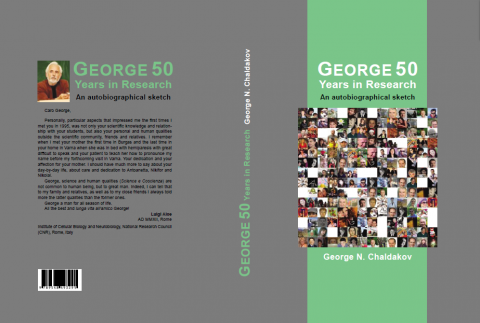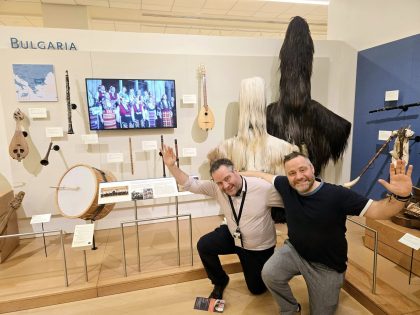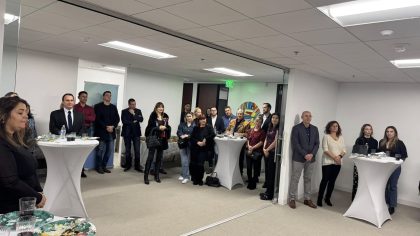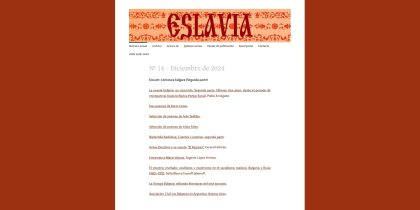.
GEORGE 50 Years in Research
An autobiographical sketch
.
George N. Chaldakov
MS Publishing Ltd.
Varna, 2012
Acknowledgments
Zenon learned from Parmenides of Elea, Plato – from Socrates, Aristotle – from Plato, Alexander the Great of Macedon – from Aristotle, Friedrich Nietzsche – from Fyodor Dostoyevsky, Carl Yung – from Sigmund Freud, Salvador Luria 1, Renato Dulbecco 2 and Rita Levi-Montalcini 3 – from Giuseppe Levi, Luigi Aloe – from Rita Levi-Montalcini, Marco Fiore – from Luigi Aloe, Hristo Photev 4 – from Ivan Peychev 5, Petya Doubarova 6 – from Hristo Photev…
PROLOGUE
I am I and my circumstance.
Jose Ortega y Gasset, Meditaciones del Quijote, 1914
In the life of each individual, „I“ (human being) can not be detached from „my circumstance“ (surrounding world). This led the most famous Spanish philosopher Ortega y Gasset to pronounce his famous maxim Yo soy yo y mi circunstancia. In the language of current biomedicine, this may be expressed by the concept of exposome, Gema Fruhbeck and I Dance Round in Adipobiology 1. As well as by Antonio Gomez Rufo’s “The soul weights as much as soul’s memories weight”, written in his book “The soul of fish”.
Programmed by my parents, the project of my life started on 23 February 2 1940 in our family house in 27 Slivnitsa Street in Burgas, a city “sitting on the dock of the bay” (title of Otis Redding’s song) of Bulgarian coast of Black Sea. Since then now at the age of 72, my parents, teachers, friends and I have been staying perfect together.
In the paradigms of cultural topology and anthropology, South-North, Mediterranean-Gothic and Apollonian-Dyonician individuals are phenotypic expressions of different style of behavior, including self-identification and attachment to or detachment from the relatives, friends and native place – numen inest (there is a spirit here) as appeared in the poem Fasti (Roman Calendar) by Ovid(ius), an ancient Roman poet.
Likewise, genius loci (spirit of a place), a natal philopatry, a geomagnetic imprinting (like that featured the natal homing in salmon and sea turtles). A sentimental topology – one has to have receptors for home adhesion molecules (like lymphocyte-endothelial interaction) to transmigrate from social circulation to native place, to see parents, sit around the table of his/her mother and enjoy feelings of togetherness – simply, to target himself to proper places and proper people, to do things properly. And virtuously.
Professor Gema Fruhbeck (Department of Endocrinology and Nutrition, University of Navara, Pamplona, Spain) is a daughter of Rafael Fruhbeck de Burgos, a chief conductor of almost all the big orchestra in the world, since 2012 appointed of the Danish National Symphony Orchestra. This should be the main reason Gema call me Chaldakov de Burgas.
Douglas Noel Adams, the author of The Hitchhiker’s Guide of the Galaxy, once said he was proud that the abbreviation of his names is DNA and that he had been born in Cambridge one year before DNA discovery. However, 23 of February may also be linked to a “how good and yet how sad” story related to the discovery of DNA structure. It was 13 years later when I was born: on (or around) 23 February, Francis Crick and James Watson completed the model of double-helix structure of the DNA molecule in Room 103 of Cavendish Laboratory in Cambridge University. After that they went in the pub The Eagle and announced to their friends that they had discovered “the secret of life”. Crick and Watson then published their DNA model in Nature on 25 April 1953 with only a footnote acknowledging “having been stimulated by a general knowledge” of Franklin’s unpublished contribution. Although they had enough specific knowledge of Franklin and Gosling’s data including their famous Photograph 51 of X-ray diffraction image of DNA taken in 1952, upon which Crick and Watson based their “own” model.
This is why Diogenes said: Ethica quaero, a paraphrase of his Hominem quaero (Latin – looking for an honest man)…
More information – George 50 Years in Research
.




